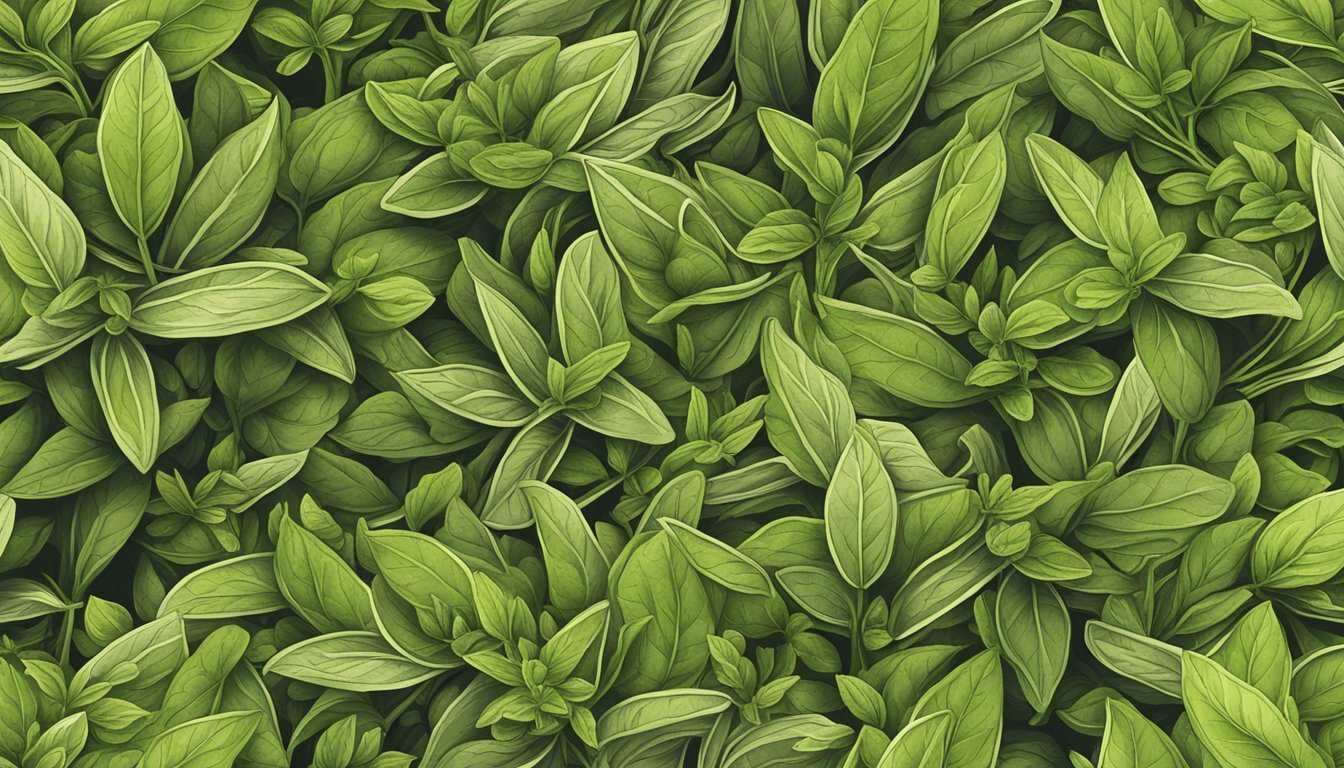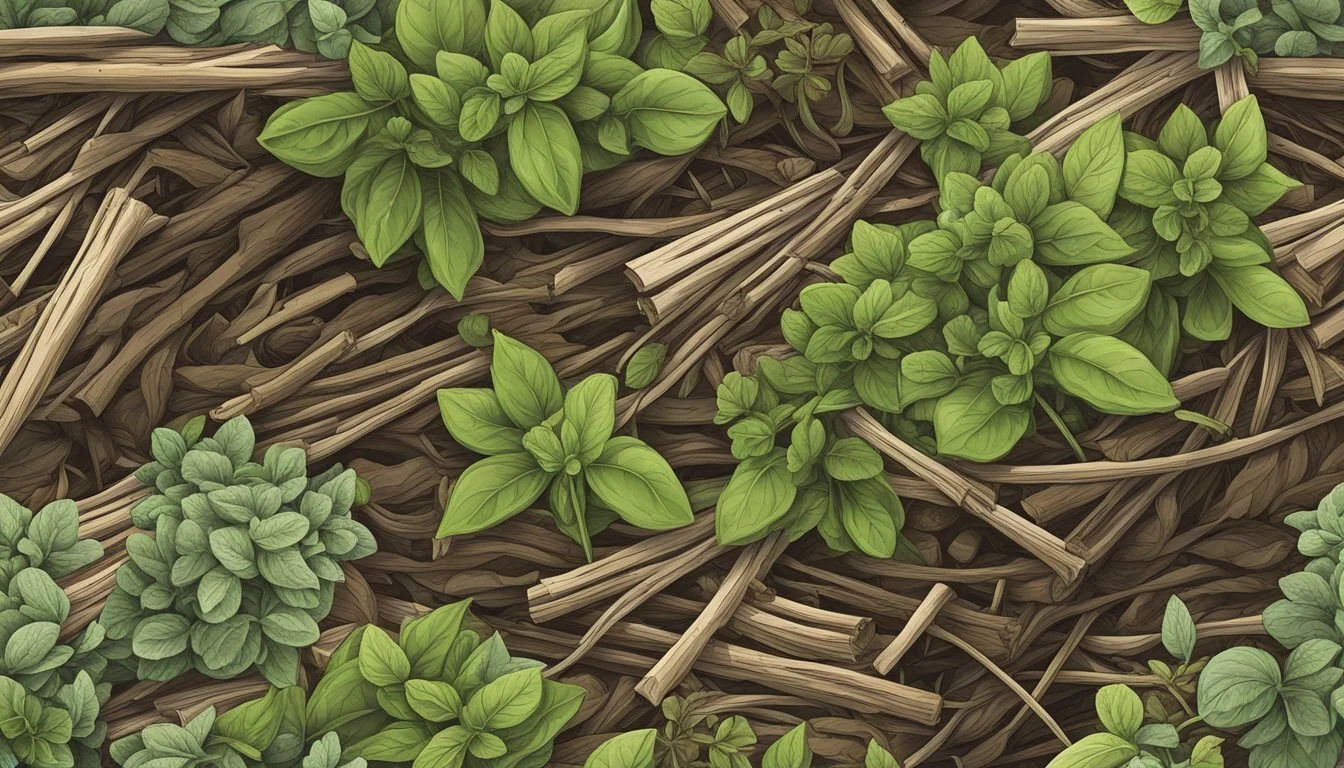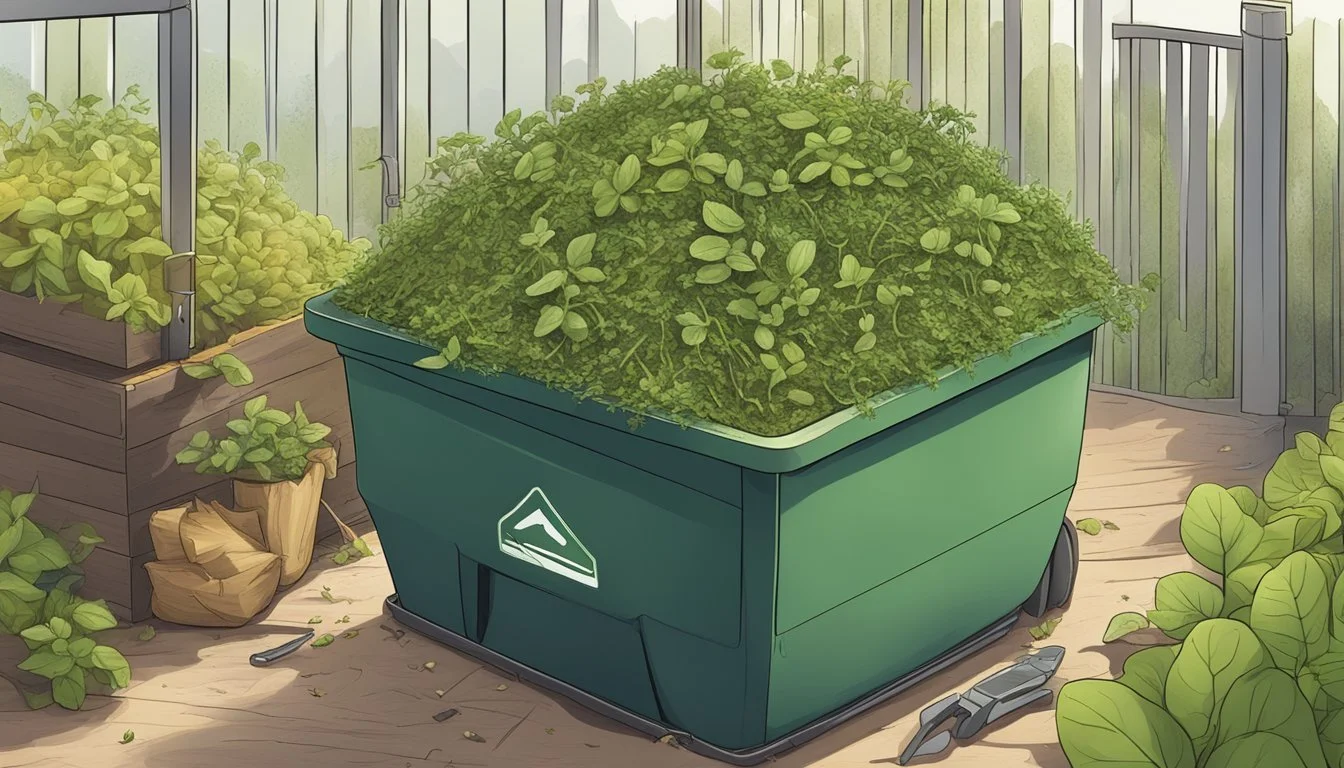Can You Compost Oregano Stems?
A Guide to Herb Waste Recycling
Oregano stems are often overlooked in favor of the leaves, which are renowned for their robust flavor and wide use in culinary dishes. However, these stems contain valuable nutrients and flavors, making them an excellent candidate for composting. Composting these stems can contribute to a nutrient-rich soil amendment that is beneficial for garden health. By breaking down organic matter like oregano stems, composting enhances the soil structure, provides essential nutrients to plants, and helps retain soil moisture.
In a garden environment, incorporating composted material back into the soil completes a natural cycle of growth and decay. Not only does this process divert waste from landfills, but it also enriches the garden soil, increasing its fertility and improving plant health. Oregano stems, being organic and biodegradable, decompose readily in a compost system, making them an asset rather than waste. The result is a more sustainable and productive garden ecosystem.
As gardeners integrate composting into their routine, they recognize its importance in cultivating a flourishing garden. The inclusion of oregano stems into their compost pile is a small but impactful practice. It turns simple kitchen scraps into valuable garden amendments, thus ensuring that every part of the plant is utilized and nothing goes to waste. With a confident approach to composting, gardeners can improve their soil quality and contribute to a more sustainable gardening system.
Understanding Composting Basics
Composting is the natural process of recycling organic matter, such as leaves and food scraps, into a valuable fertilizer that enriches soil and nurtures plant growth.
Composting Methods
There are several methods to create compost, each suitable for different environments and preferences. The aerobic composting method requires oxygen and involves layering green matter (like vegetable scraps) with brown matter (such as dry leaves), which is then regularly turned to introduce air. Anaerobic composting happens without oxygen and takes longer, often resulting in a less pleasant odor. For those with limited space, vermicomposting uses worms to break down organic material. Lastly, cold composting is simply piling up yard waste and letting it decompose over a year or more.
Ingredients for Compost
A successful compost pile needs a balance of the following:
"Greens": Provide nitrogen and include materials like fruit and vegetable scraps, and freshly cut grass.
"Browns": Provide carbon and comprise materials like dry leaves, straw, and branches.
Water: The pile should be kept moist, as a damp sponge, to aid the microorganisms in breaking down the material.
Soil: Introducing a shovelful of soil can add microorganisms and speed up the composting process.
Air: Regularly turning the pile or introducing aeration through holes or pipes helps maintain the pile's health.
When balanced correctly, compost becomes rich in nutrients, supports a web of soil organisms, and regulates soil pH, creating an ideal environment for plant growth.
Benefits of Composting Oregano Stems
Composting oregano stems can significantly enhance soil nutrition and reduce garden waste by returning valuable organic matter back into the earth.
Soil Nutrition and Health
When oregano stems are composted, they decompose and become part of a nutrient-rich humus that benefits the soil in several ways:
Nutrient Release: Oregano stems are a source of essential nutrients that are released into the soil as they break down, providing sustenance for earthworms and beneficial microorganisms.
Soil Structure: Adding compost to the garden improves soil aeration and drainage, which is vital for healthy plant growth.
Reducing Waste
Integrating oregano stems into the compost pile helps minimize garden waste:
Less Landfill Input: By composting oregano stems, they are kept out of landfills, which reduces methane emissions and conserves space.
Cyclic Gardening Practice: Repurposing oregano stems into compost closes the loop in garden waste management, leading to a more sustainable gardening practice.
How to Compost Oregano Stems
Composting oregano stems effectively requires proper preparation to ensure they break down seamlessly into rich, organic material. This entails cutting the stems into smaller pieces and choosing a suitable composting method that facilitates their decomposition.
Preparation of Stems
Before adding oregano stems to the compost, one should cut them into pieces no longer than an inch or two. Smaller pieces provide more surface area for microorganisms to work, speeding up the composting process. This can be done with a pair of garden scissors or a sharp knife. It's crucial to ensure the stems are free from any disease or pest infestation to prevent the spread to the compost.
Composting Techniques
There are several techniques that can be utilized to compost oregano stems:
Add Directly to Compost Bin: Mix the stems into your bin along with other green waste like vegetable peels and brown waste such as dry leaves or shredded paper. This helps balance the nitrogen-carbon ratio, which is essential for efficient composting.
Trench Composting: For gardeners who prefer a more direct approach, oregano stems can be buried directly into the garden soil. Dig a trench, lay down the stems, and cover with soil. Over time, the stems will decompose, improving soil structure and nutrient content.
Use as Mulch: If composting is not an option, oregano stems can also serve as mulch around plants. They provide a barrier for weeds, help retain soil moisture, and as they break down, they contribute nutrients back into the soil.
In all techniques, ensuring proper moisture and airflow is key. The compost pile should remain as moist as a wrung-out sponge and should be turned regularly to provide adequate oxygen, which aids in the decomposition of the oregano stems and the other organic material present.
Oregano Plant Overview
Oregano, scientifically known as Origanum vulgare, is a hardy, perennial herb that thrives in conditions mimicking its native Mediterranean environment.
Botanical Profile
Oregano is a member of the mint family, Lamiaceae, characterized by its aromatic leaves. It is known for its robust flavor and is widely used in a variety of culinary applications. The plant typically grows to a height of 20 to 80 centimeters and bears small, purple flowers that are quite attractive to pollinators.
Growing Conditions
Oregano requires full sun exposure to flourish and prefers well-drained soil. It is a low-maintenance plant that often thrives with minimal care. Over-fertilization can be detrimental; oregano generally grows better with little to no fertilizer. This herb is hardy, tolerating light frost, but grows best in warm, dry climates. Regular harvesting encourages fuller growth and prevents the oregano from becoming woody.
Commonly Asked Questions
This section addresses common queries regarding the compostability of different parts of oregano plants, including stems, and highlights materials that are not suitable for composting.
Can You Compost all Parts of Oregano?
Oregano, including its stems, flowers, and leaves, is generally safe to compost. After the plant has completed its lifecycle, all parts can be added to a compost bin. However, it is crucial to chop or shred the stems before composting, as they are woody and decompose slowly. Composting oregano can benefit the compost mix by introducing essential microorganisms that aid in breaking down organic matter.
Seeds: If oregano seeds are present, it's important to consider if they might germinate in the compost pile.
Diseases: If the oregano plant suffered from any diseases, it is not recommended to compost it, as this can spread pathogens.
What Should Not Be Composted?
While most parts of the oregano plant can be added to compost, there are general restrictions on what should not be composted to avoid attracting pests or fostering diseases in the compost pile.
Diseased Plants: Do not compost oregano plants with visible signs of disease.
Pesticide-Treated Oregano: Avoid composting oregano that has been treated with non-organic pesticides, as these can harm the beneficial microorganisms in the compost.
By following these guidelines, one can effectively compost oregano and contribute to a nutrient-rich soil amendment.
Optimizing Your Oregano Harvest
To ensure both quality and quantity from one's oregano plants, it's important to understand the optimal timing and techniques for harvesting, as well as the best methods for processing the stems post-harvest.
When to Harvest Oregano
Harvesting oregano should ideally occur right before the plant blooms, when the stems have reached 4 to 5 inches in height. At this stage, the concentration of essential oils in the leaves is highest, offering potent flavor.
Harvesting Techniques
Snipping Stems: Use sharp scissors or pruners to cut the oregano stems 2/3 of the way down. This technique encourages the plant to produce new growth.
Leaving Leaves: Always leave at least one pair of leaves on the remaining stem, which allows the plant to recover and regrow efficiently.
Post-Harvest Processing
Drying: To dry oregano stems, hang them in a well-ventilated area or use a food dehydrator at a low temperature until the leaves crumble easily.
Storing: Store dried oregano in airtight containers away from direct sunlight to preserve flavor and prevent moisture buildup.
Incorporating Oregano in Culinary Uses
The robust flavor of oregano makes it a versatile culinary herb that enhances a variety of dishes, from classic pasta and pizza to aromatic teas. Proper storage is key to maintaining its pungency for cooking uses.
Cooking with Oregano
Oregano lends a signature earthiness to a wide array of recipes. It is particularly prominent in Italian and Mediterranean cuisines where its potent, zesty flavor complements tomato-based sauces (What wine goes well with tomato-based sauces?) and cheese-covered pizzas effortlessly. When cooking with oregano, one should add it at the right time to maximize its taste; dried oregano can withstand longer cooking times, making it perfect for simmering sauces or stews, while fresh oregano is ideal added towards the end of cooking to meats or vegetable dishes for a brighter note.
Recipe Tips:
For pasta dishes, a teaspoon of dried oregano can be incorporated into the sauce.
To season meats, mix fresh oregano with olive oil, garlic, and lemon juice for a marinade.
Sprinkle oregano on pizza before baking for an authentic Italian flavor.
Oregano leaves steeped in boiling water create a comforting tea that can aid digestion.
Preservation and Storage
Maintaining the integrity of oregano, whether fresh or dried, is crucial for its longevity and flavor preservation. Fresh oregano should be stored in the refrigerator, wrapped in a damp paper towel and placed in a plastic bag. For long-term storage, it can be dried or frozen:
Drying: Hang bunches of oregano upside down in a dry, warm area until the leaves are completely dry, then store in an airtight container away from light.
Freezing: Chop fresh oregano and mix with water or olive oil in an ice cube tray — freeze and use as needed for cooking.
Handling these storage methods correctly ensures that oregano retains its aromatic essence, which is essential for imparting the desired flavor into various dishes.
Oregano as a Companion Plant
Incorporating oregano into the garden plays a strategic role, offering both protective and growth-enhancing advantages for various companion plants.
Benefits in the Garden
Oregano acts as a robust companion plant, providing a range of benefits that make it a valuable addition to any garden:
Pest Repellent: Its aromatic leaves are natural deterrents against common garden pests.
Attracts Pollinators: Flowers of the oregano plant attract beneficial insects, aiding in the pollination of surrounding plants.
Soil Health: Oregano can contribute to the overall health of the garden soil through its root systems and decaying plant matter.
Companion Planting Combinations
Several plants are known to thrive when paired with oregano in the garden:
Tomatoes: Oregano repels insects that might harm tomato plants and may enhance flavor.
Beans: They benefit from oregano's pest repellent properties without competing for resources.
Peppers and Cucumbers: These plants can enjoy the shade provided by taller oregano plants and their ability to repel certain pests.
Other Herbs: Oregano coexists well with herbs like rosemary and thyme, sharing similar growing requirements.
Conversely, it is advisable to avoid planting oregano with plants that require significantly different growing conditions or might be overwhelmed by oregano's robust growth.
Troubleshooting Common Oregano Issues
When cultivating oregano, gardeners may encounter several issues ranging from pest infestations to environmental stress. Addressing these promptly ensures the health and vitality of the plants.
Dealing with Pests and Diseases
Aphids and Spider Mites: These pests can be common in oregano plants. They can typically be managed by a strong water spray to dislodge them from the plant. Consistent monitoring and early intervention are crucial to keep infestations under control. If necessary, organic insecticidal soaps or neem oil can also be used as treatments.
Mint Rust: This fungal disease causes small, bright orange to brown spots on the leaves. Infected plants must be removed and destroyed, as mint rust can spread quickly. It is also essential to avoid overhead watering to prevent the spores from splashing onto healthy plants.
Environmental Stress Factors
Watering: Oregano prefers well-drained soil and should be watered consistently but not excessively. The roots are prone to rot if left in soggy conditions. It's best to water the base of the plants, ensuring the foliage remains dry, which helps prevent fungal diseases.
Frost and Full Sun: While oregano thrives in full sun, it is also sensitive to extreme temperatures. Protection from frost is necessary to prevent damage to the plant. During intense summer heat, providing partial shade can help mitigate stress to oregano plants.









